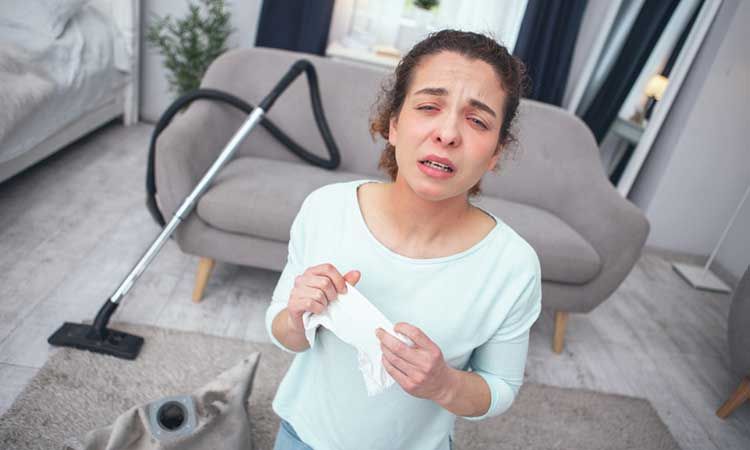Discover why you may be suffering from dust allergy
Do you end up sneezing every time you take up cleaning your home or whenever you are exposed to dust particles? If yes, you might be suffering from dust allergy. Dust allergy is one of the most common forms of allergies, with around 65 million people around the world suffering from it. It is caused by tiny dust mites that live in house dust. People with dust allergy may also experience symptoms of asthma, such as wheezing and difficulty in breathing; likewise, people with asthma have increased risk of being allergic to dust mites.
So, how does an allergic response occur? An allergic response occurs when an allergen, in this case a dust mite causes your immune system to overreact. This causes an inflammation of nasal passages, thereby causing allergic symptoms.
Symptoms of dust allergy
- Sneezing, especially after exposure to dust particles
- Nasal congestion & runny nose
- Itchy, red or watery eyes
- Coughing
- Swollen skin under the eyes
- Facial pressure and pain.
- Frequent upward rubbing of the nose in case of children.
If your dust allergy leads to asthma, you might also experience symptoms like:
- Difficulty in breathing
- Tightness or pain in the chest
- Whistling or wheezing sound while exhaling
- Shortness of breath & coughing leading to trouble in sleeping.
Preventive measures
By taking preventive measures to reduce the number of dust mites around your home, you may be able to control allergic symptoms as well as severity.
- House dust mites usually thrive in humid environments. So, use a dehumidifier or an air conditioner. This will maintain relative humidity at about 50% or below.
- Make sure your mattress and pillows are covered with dust-proof or allergen impermeable covers
- Wash all bedding and blankets at least once a week in hot water
- It is recommended to use synthetic materials over wool or feathered ones for bedding
- Remove fabric curtains and upholstered furniture
- Do not use a dry cloth for cleaning, as this will stir up mite allergens. Use a damp mop or rag instead to remove dust.
- If you are using a vacuum cleaner, use one with either a double-layered microfilter bag or a High Efficiency Particulate Air (HEPA) filter. This helps to trap allergens that pass through a vacuum's exhaust.
When to see a doctor?
Usually, the symptoms of dust allergy are often mistaken as those of common cold. You should see a doctor if your symptoms persist more than a week or if symptoms get severe like severe nasal congestion and difficulty in breathing or sleeping. Seek emergency care if you experience shortness of breath that rapidly worsens. You can consult our homeopathy experts for allergies treatment online or by booking an appointment: https://www.drbatras.com/book-an-appointment
Homeopathy allergy treatment
The best thing that homeopathy does unlike other systems of medicine is that it builds immunity. Instead of masking the symptoms and working towards just giving you relief from them, homeopathy focuses on boosting the body’s immune system, which in turn reduces its hypersensitivity to allergens. Result? Patients react less aggressively to allergens.
Some of the commonly recommended homeopathic medicines for dust allergy are:
- For sneezing due to dust, Solanum Lycopus is suggested.
For asthma triggered from dust, Pothos works well.
So, next time you suffer from an allergic response due to dust, please visit your nearest homeopathic clinic and be assured of safe, natural and long lasting relief from your allergies.






